
Key Points
- New Lows on the S&P 500 Are Not Building
- NYSE Breadth Metrics Weaken on the Week
- Intermediate and Long-Term Trend Metrics Test Key Levels
- S&P 500 Data Holds Up the Best
- Small Cap Advance/Decline Line Pulls Back to Support
Chart in Focus
Our view has been that the S&P 500 will resume its uptrend into the end of the year after a brief “pause that refreshes.” Our view would be challenged if we were to see a build in new short-term lows, like what was seen ahead of September’s weakness. While the number of stocks making new 21-day highs has declined slightly during the consolidation, there has not been a material build in new 21-day lows. This gives us confidence that the index will resolve the consolidation to the upside.
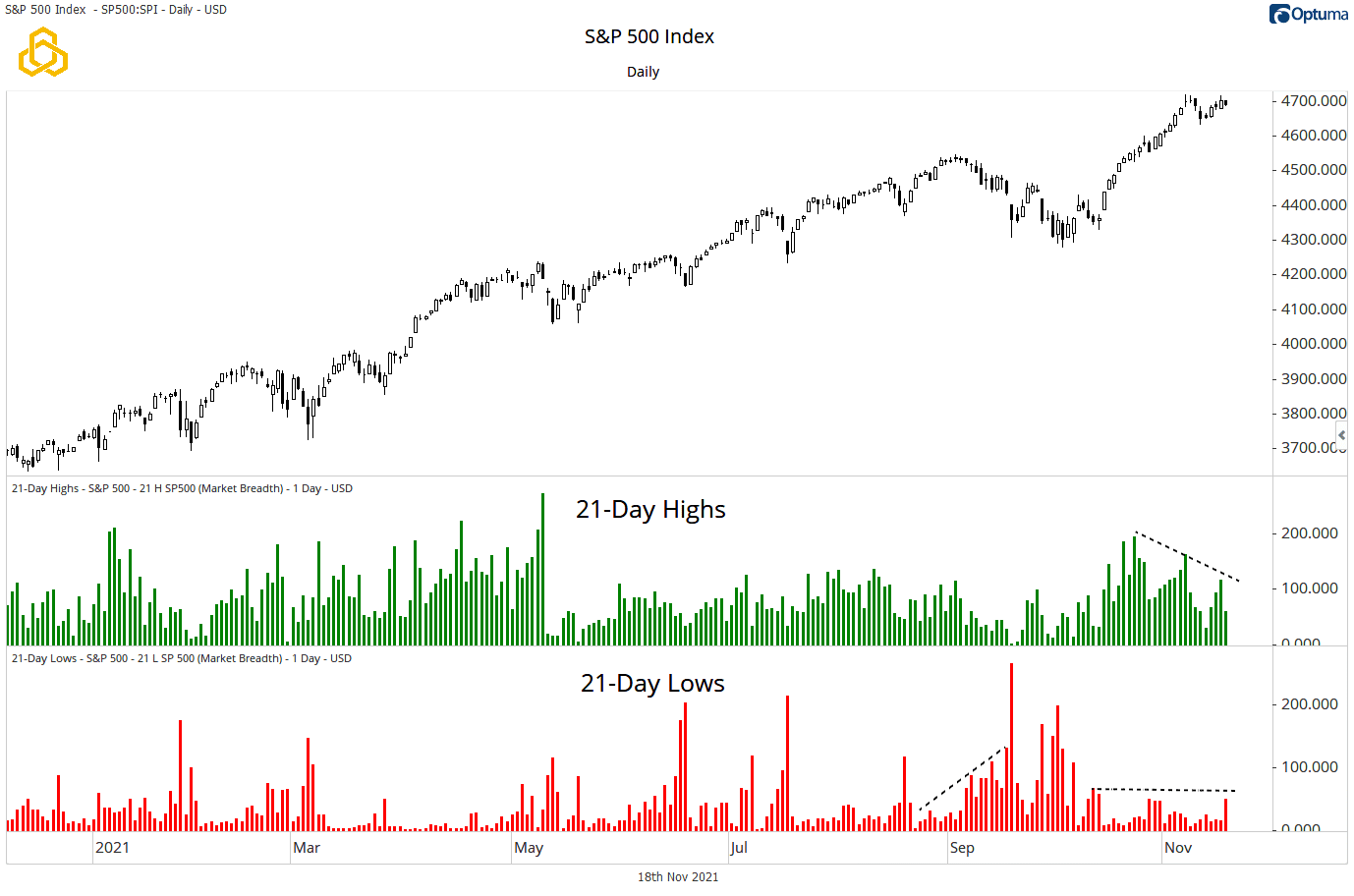
NYSE Breadth
The NYSE’s Advance / Decline Line continues to pull back from record highs and has slightly undercut the breakout level. The A/D line remains above the rising 50-day moving average, as does the S&P 500. Equity bulls want to see a quick rebound from this indicator that takes to new highs, which would signal that the index is likely to do the same.
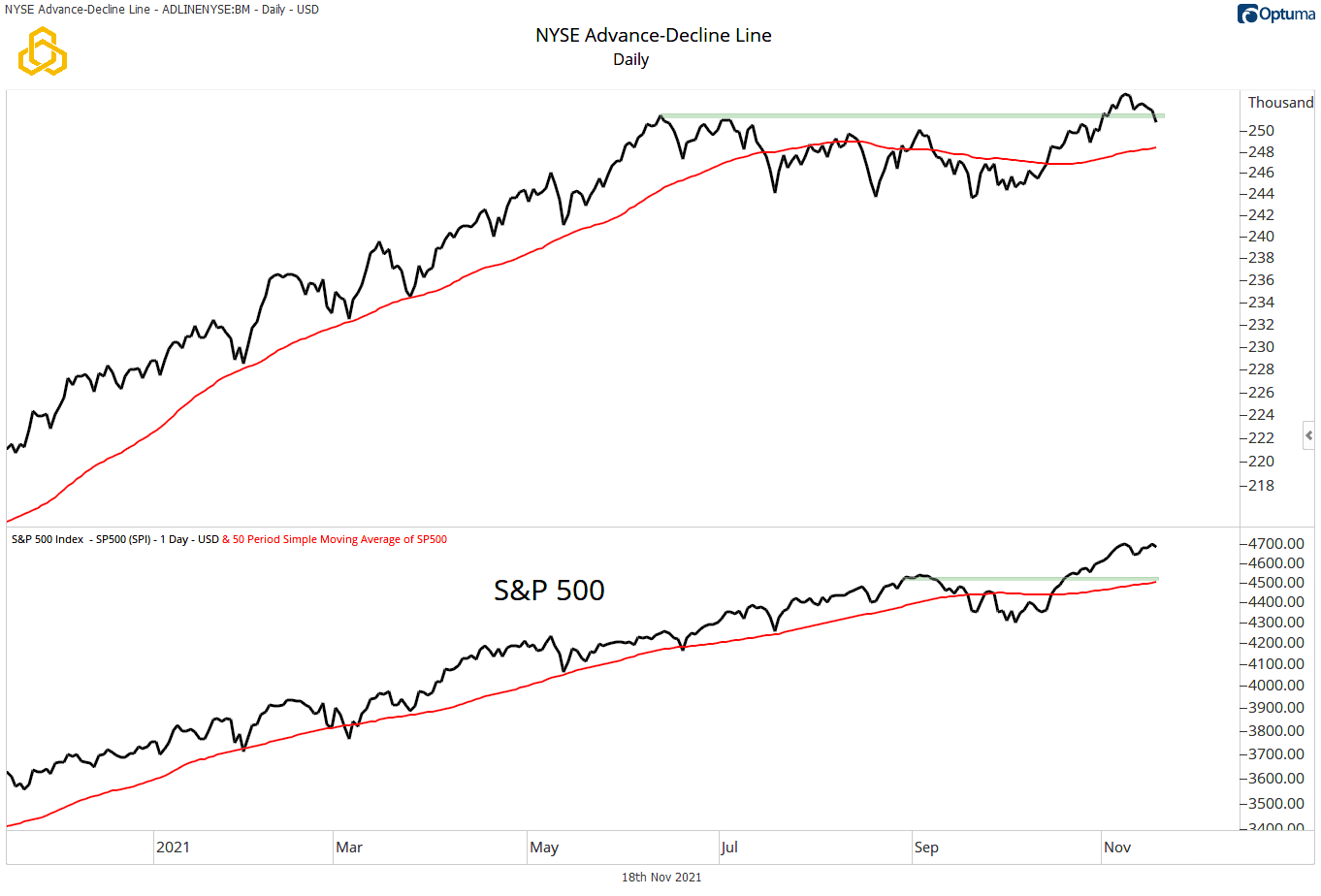
The NYSE’s Advance-Declining Volume Line has also pulled back a bit but has not broken below the short-term breakout level or the 50-day moving average. If these key points hold, odds favor a move to the May highs and further upside for the S&P 500.
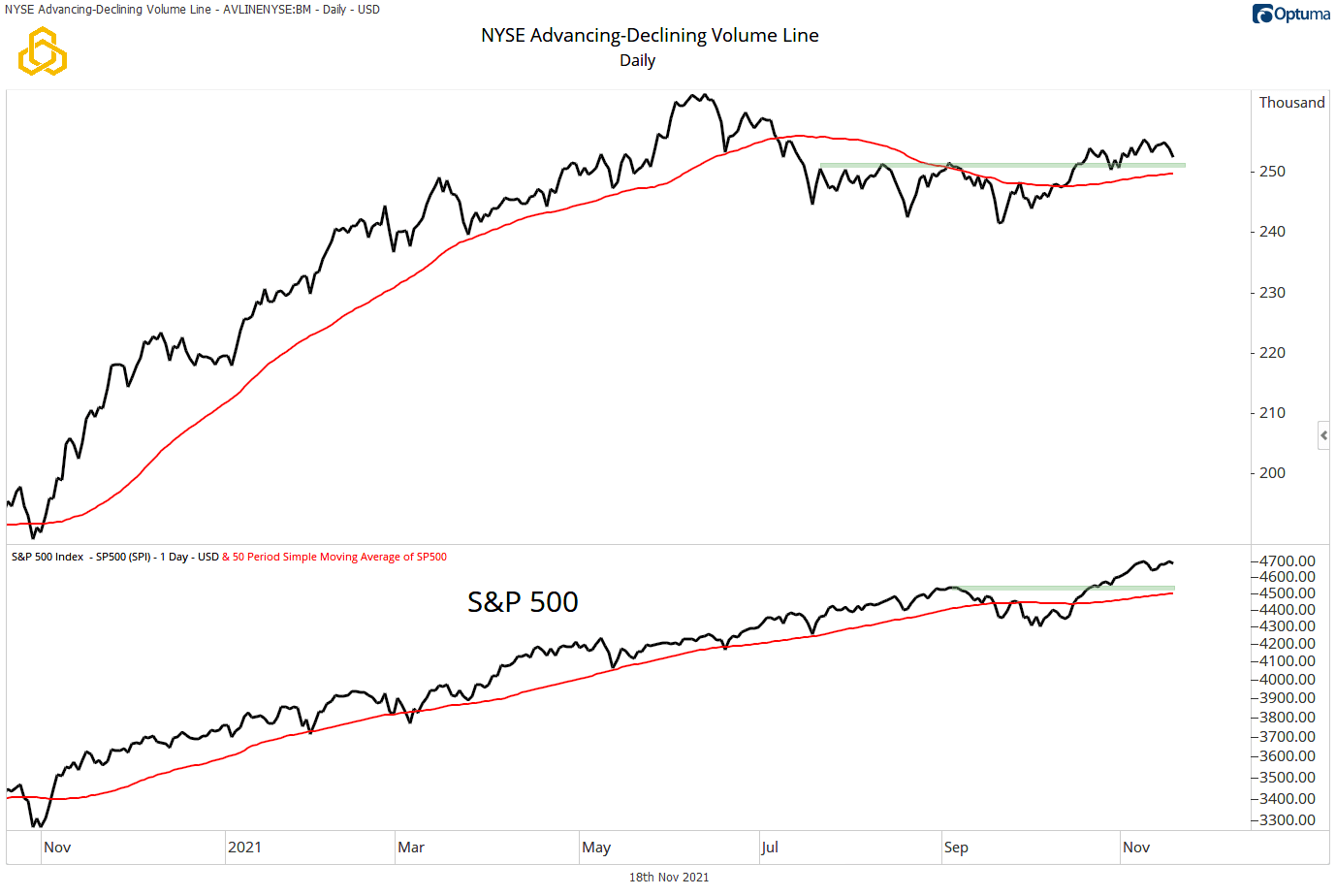
There has been an increase in the 5-day moving averages of issues on the NYSE, making new 52-week and six-month lows over the past week. Since May, these types of increases have been short-lived and have not led to the types of build-ups that generally precede meaningful declines in equity prices. Bullish investors want to see this remain to be the case, with a fast reversal from current levels.
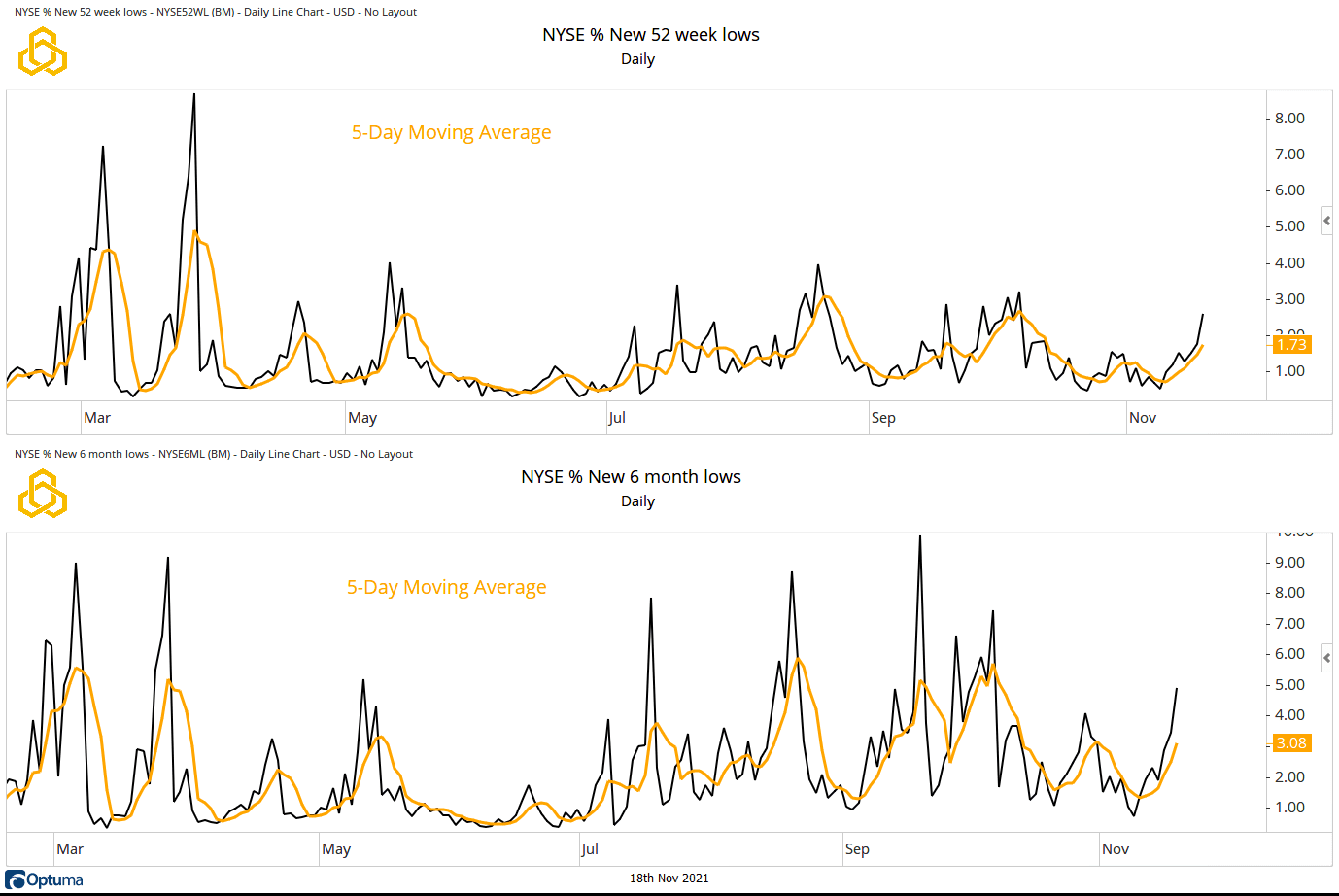
As we would expect when new lows are increasing, the five-day moving averages of stocks on the NYSE making new six-month and 52-week highs have declined over the past week. A reversal from here that takes out the recent highs would be a bullish signal for equity prices. However, we do not want to see these indicators spend much time trending lower.
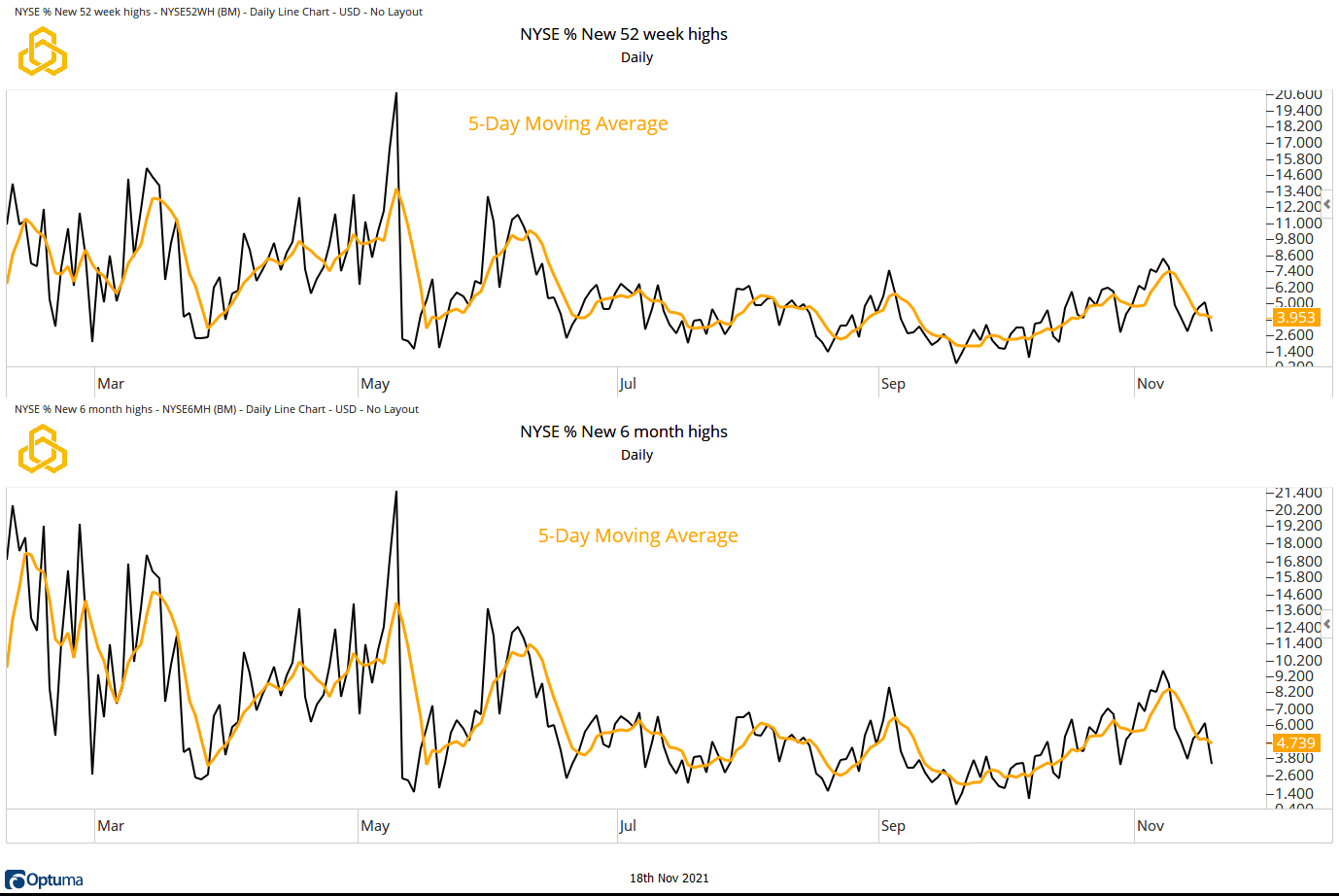
More work needs to be done for the percentage of stocks on the NYSE trading above their respective 200-day moving averages, which moved from 49% to 44% this week. The indicator appeared to be turning the corner before weakness this week slammed it back into the short-term consolidation zone. We want to see the September lows hold to have confidence that current activity is part of a base-building process that leads to a new move to the upside.
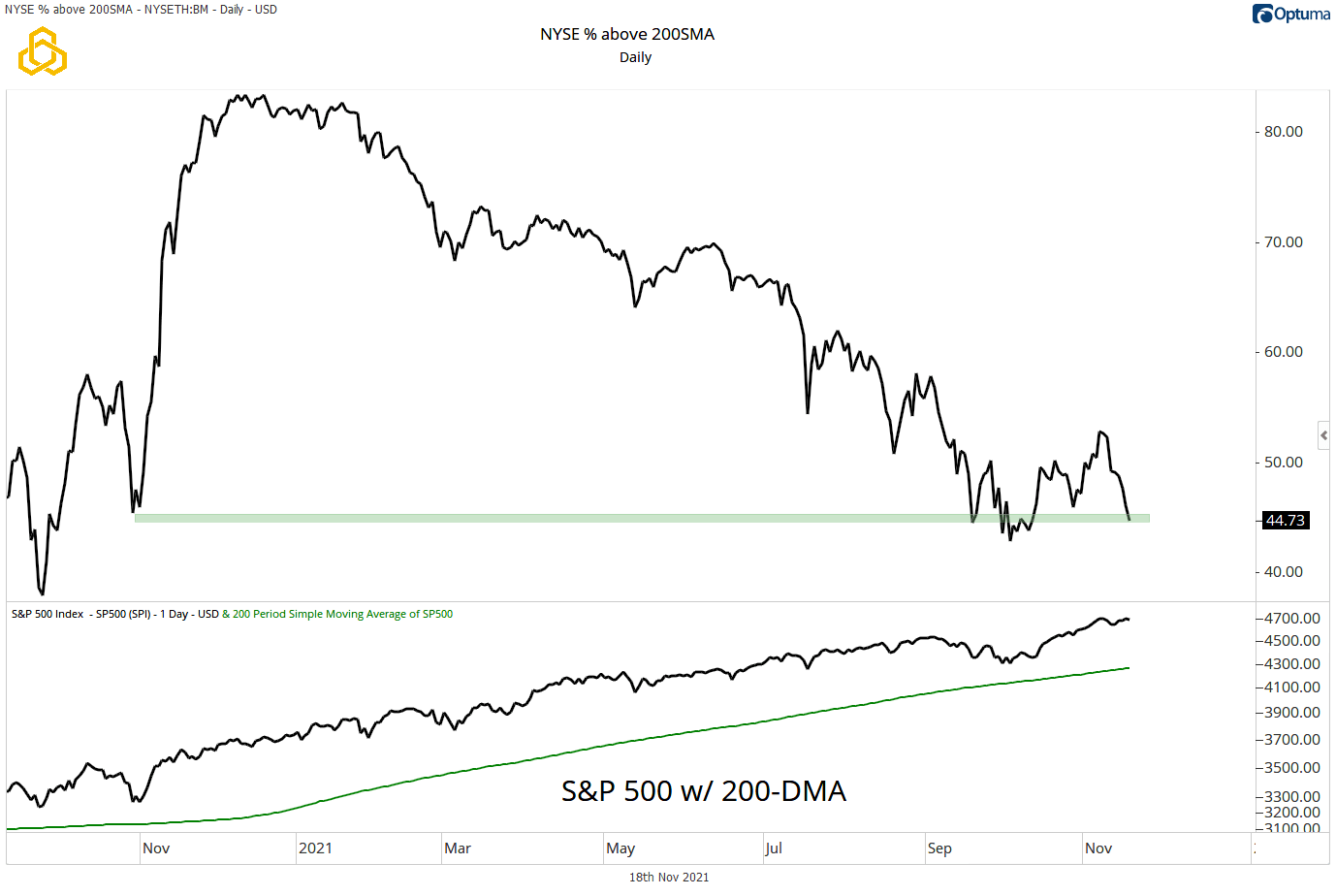
After rounding higher and breaking the downtrend line, the percentage of issues on the NYSE trading above their 50-day moving averages has checked back to that trendline. The metric declined to 55% from 61% last week. Ideally, the indicator will use this level as support to establish a higher low to keep the current uptrend in place.
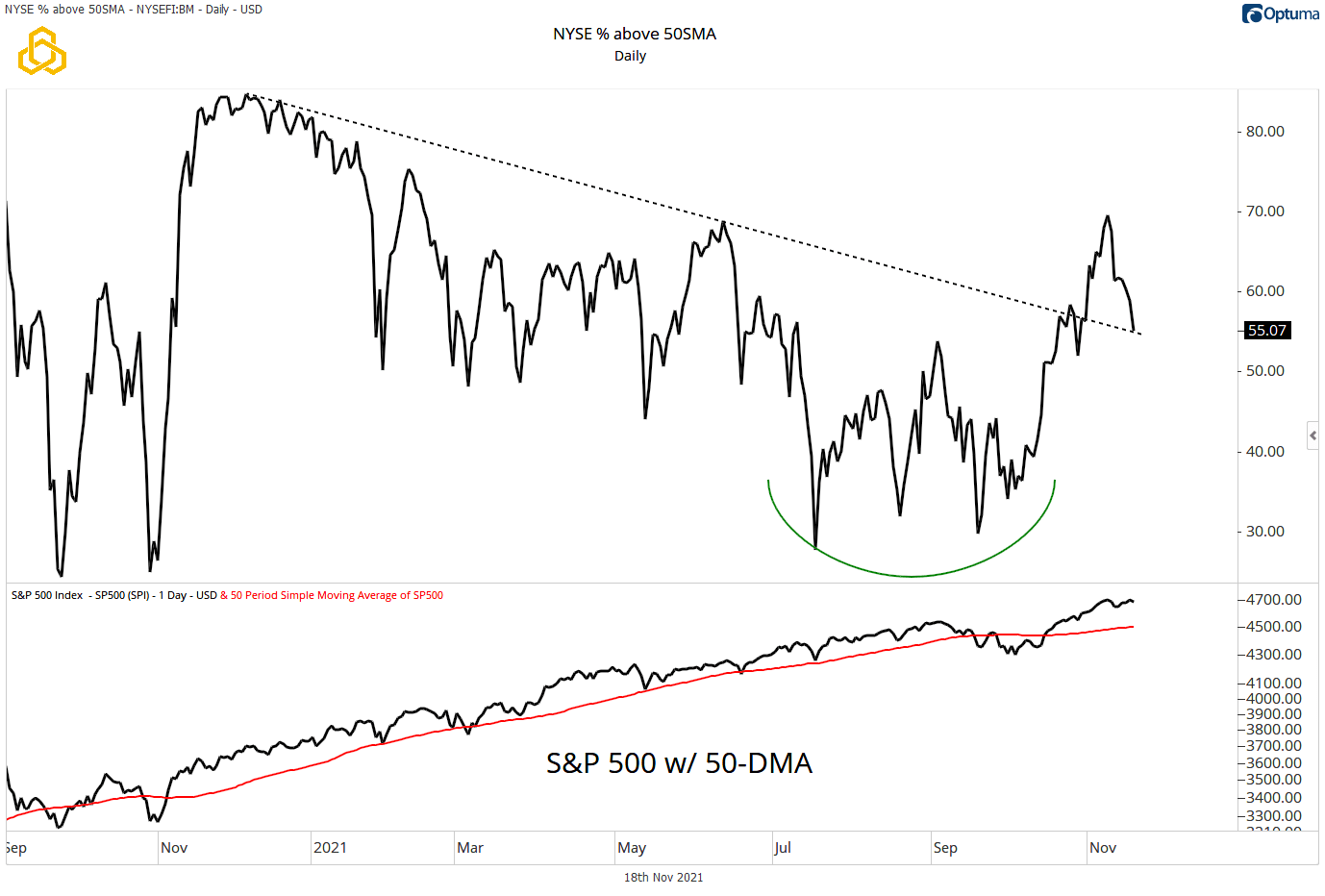
The short-term metric is where we see the greatest impact, as the percentage of stocks trading above their respective 20-day moving averages fell to 47% from 57% last week. At the same time, the indicator has dropped through the rising trendline. So far, this has not led the index to break its own 20-day moving average. However, we want to see weakness in this reverse in short order.
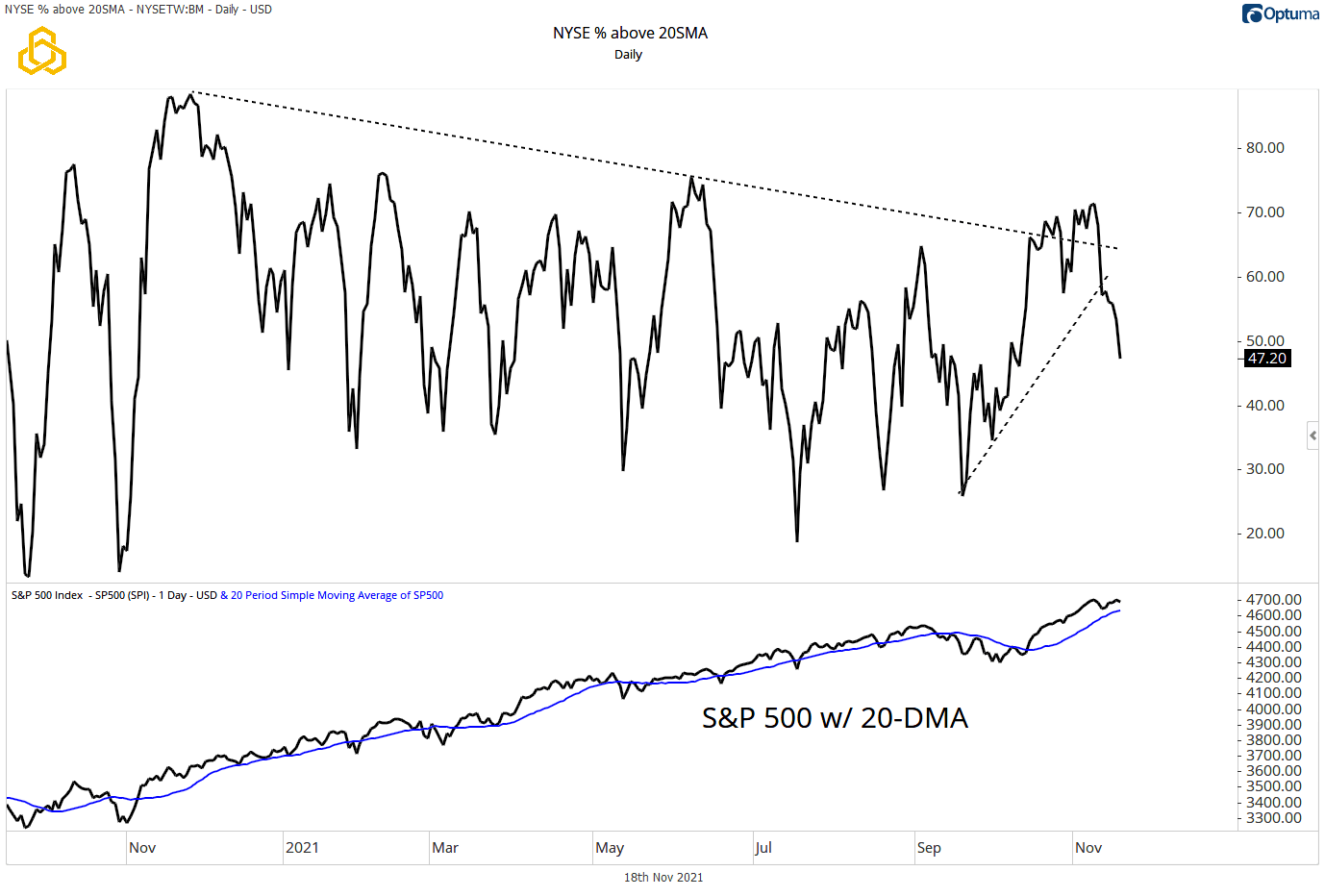
S&P 500 Breadth
Breadth metrics for the S&P 500 fell slightly on the week:
- Advance/Decline Line: Trading near the highs, above the rising 50-day moving average.
- Percent Above Their 200-Day Moving Average: 71% from 74% last week, looking for a breakout.
- Percent Above Their 50-Day Moving Average: 68% from 73% last week, retests the breakout level.
- Percent Above Their 20-Day Moving Average: 57% from 65% last week, fading from resistance.
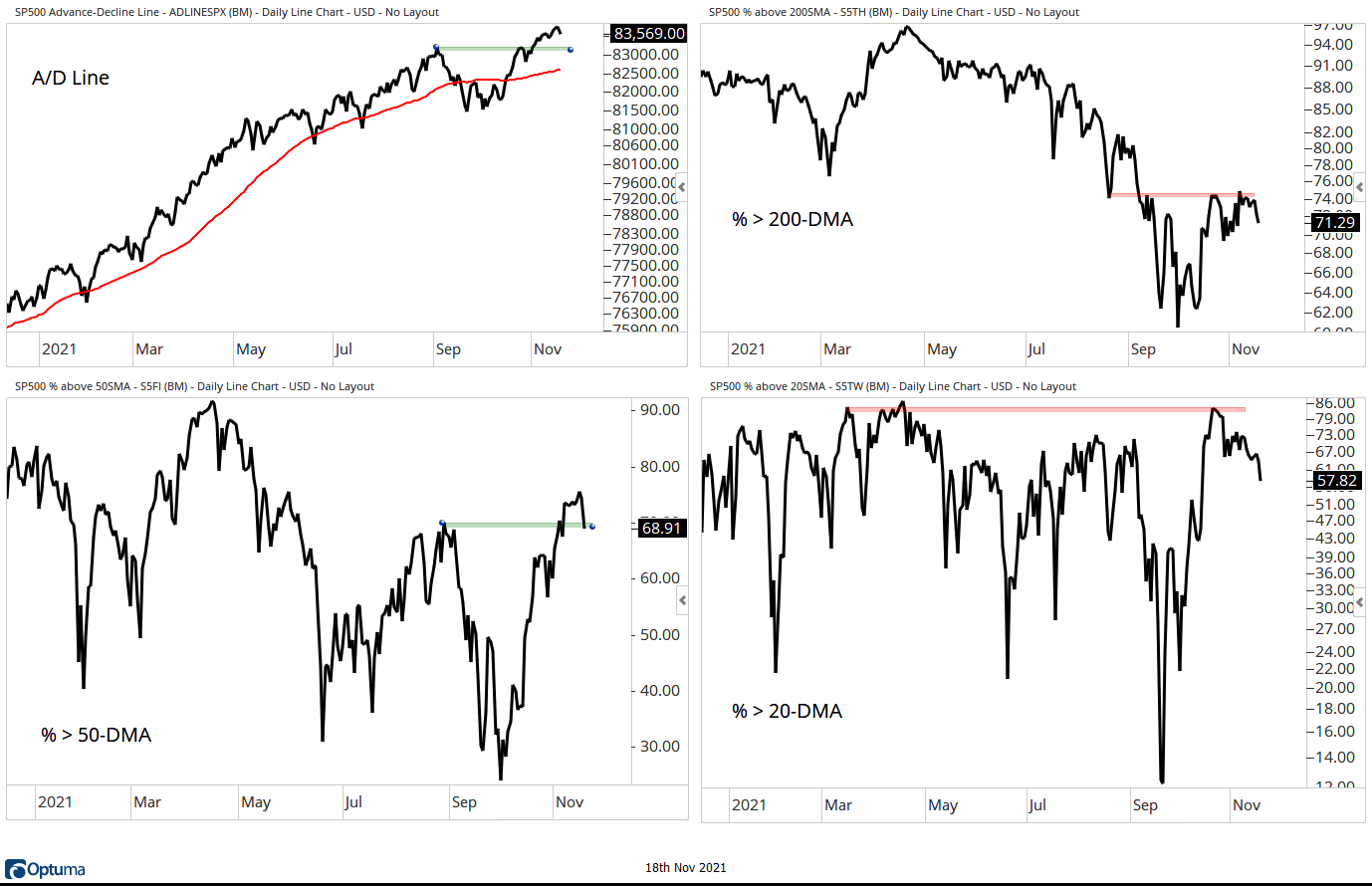
SmallCap Breadth
Breadth metrics for the S&P 600 Small Cap Index were lower on the week.
- Advance/Decline Line: Above the 50-day moving average, retesting the breakout level.
- Percent Above Their 200-Day Moving Average: 59% from 63% last week.
- Percent Above Their 50-Day Moving Average: 69% from 74% last week, testing support.
- Percent Above Their 20-Day Moving Average: 57% from 72% last week.
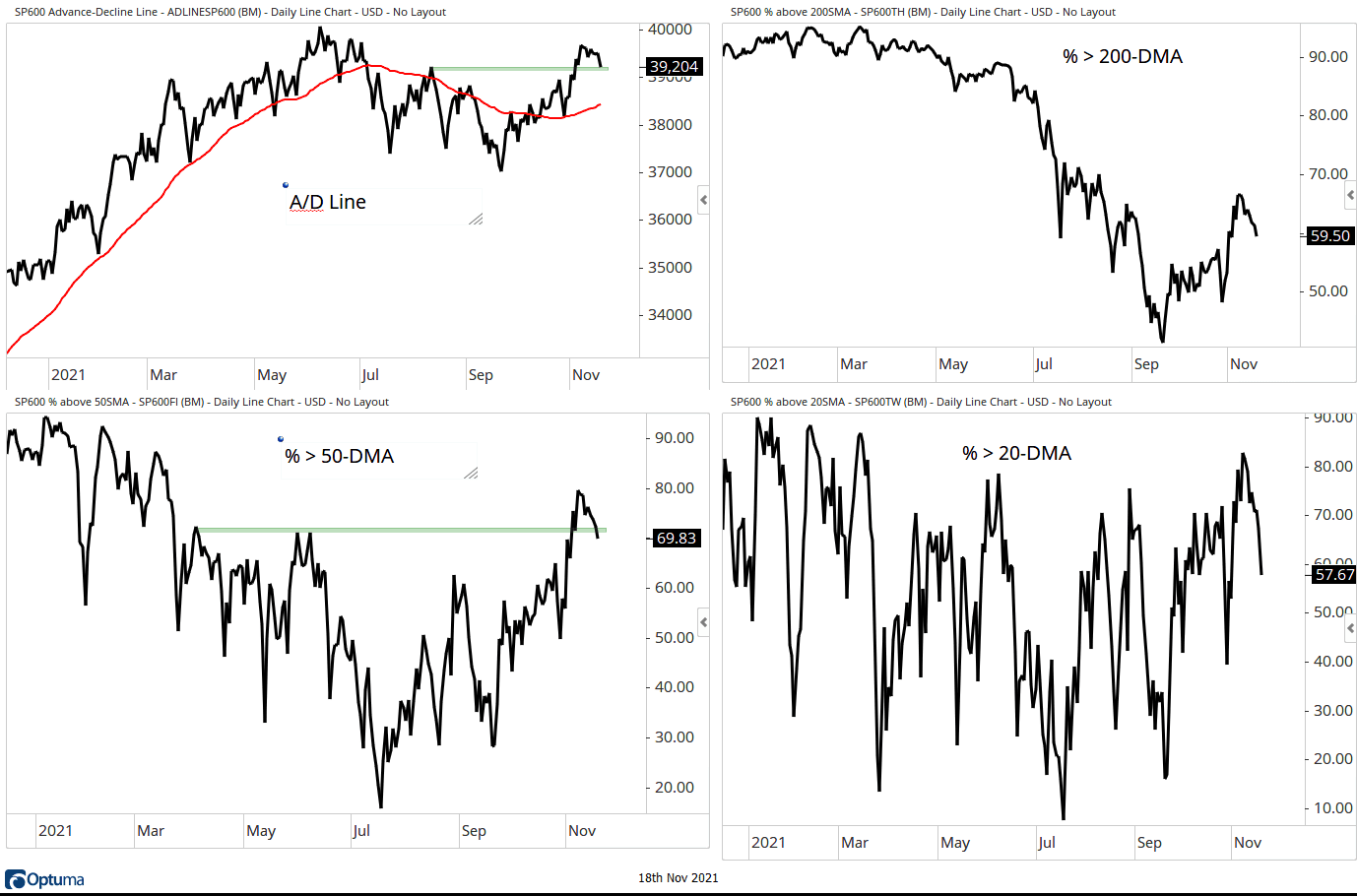
Take-Aways:
As the S&P 500 continues to work through its short-term consolidation, breadth metrics have weakened across markets. Thus far, we have not seen the types of breakdowns or builds in new lows that would give us pause. Our view remains that the market is likely to trend higher into the end of the year after this “pause that refreshes.”
Disclosure: This information is prepared for general information only and should not be considered as individual investment advice nor as a solicitation to buy or offer to sell any securities. This material does not constitute any representation as to the suitability or appropriateness of any investment advisory program or security. Please visit our FULL DISCLOSURE page.
